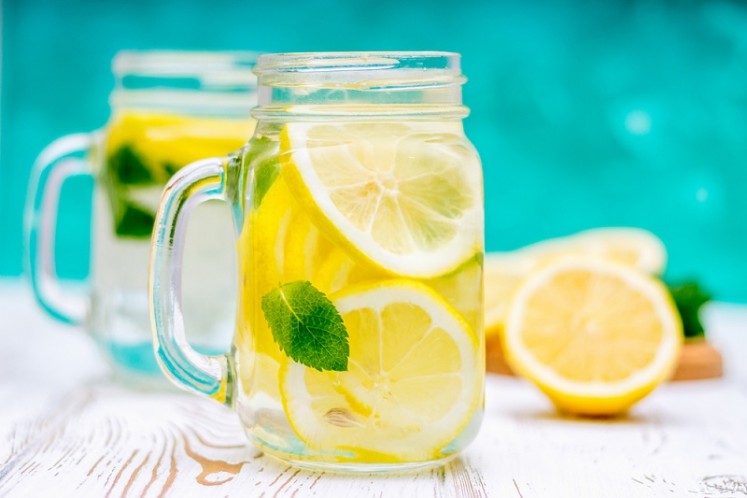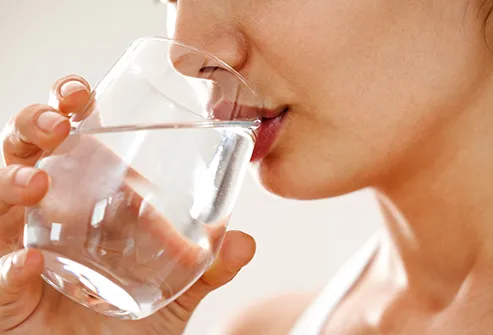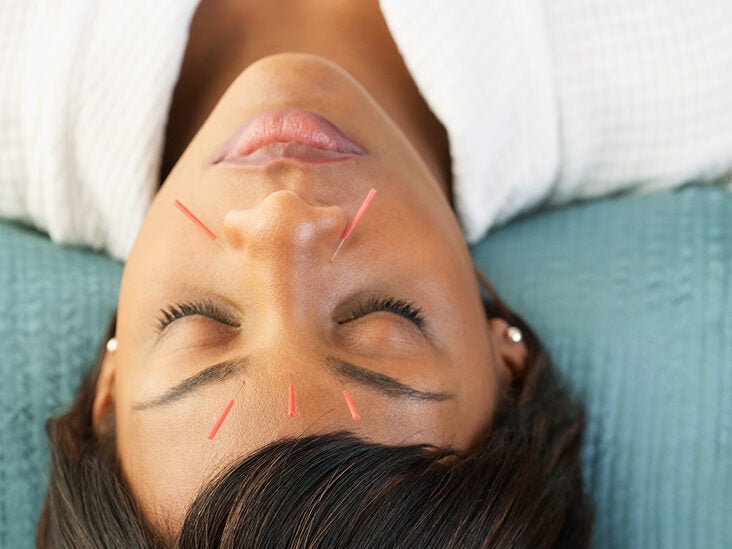1
Pregnancy / Exercise tips for pregnancy
« on: December 19, 2020, 05:30:28 PM »
Exercise tips for pregnancy
Regular exercise during pregnancy can improve health, reduce the risk of excess weight gain, and possibly make delivery easier.
Exercise can benefit a woman’s mental and physical health during pregnancy, and it may give the newborn a healthier start, too. Despite this, studies suggest that only about 40% of pregnant women exercise.
Current guidelines recommend at least 150 minutes a week of moderate intensity aerobic physical activity, both during and after pregnancy.
An exercise slot does not need to be lengthy. Women can, for example, exercise five times a week for 30 minutes or 10 times a week for 15 minutes.
Those who were doing more vigorous activity, such as running, before becoming pregnant can usually continue with their existing regimen, although they should check first with their doctor.
Six types of exercise to stay fit and healthy

Exercising while pregnant can help prevent pregnancy complications and give the infant a healthier start.
Suitable activities during pregnancy include:
These activities carry little risk of injury, benefit the entire body, and are usually safe to do until delivery.
1. Brisk walking
If prepregnancy exercise levels were low, a quick stroll around the neighborhood is a good way to start.
This activity has several advantages:
Safety tip: Stay safe by choosing smooth surfaces, wearing supportive footwear to prevent falls, and avoiding potholes, rocks, and other obstacles.
2. Swimming
Swimming, walking in water, and aqua aerobics allow for motion without putting pressure on the joints. Buoyancy may offer some relief from the extra body weight as the pregnancy progresses.
It is important to choose a stroke that feels comfortable and does not strain or hurt the neck, shoulders, or back muscles. Breaststroke may be a good choice for this. Using a kickboard can help strengthen the leg and buttock muscles.
Safety tips:
3. Stationary cycling
Cycling on a stationary bike, also called spinning, is safe for most women during pregnancy, including first-time exercisers.
Advantages include:
Later in pregnancy, a higher handlebar may be more comfortable.
4. Yoga
Prenatal yoga classes can help women keep their joints limber and maintain flexibility. Yoga may also help with pain and stress management, according to one study.
The benefits of yoga include:
Safety tips: As pregnancy progresses, consider skipping poses that:
When lying flat on the back, the weight of the bump can put pressure on major veins and arteries and decrease blood flow to the heart. This reduced blood flow can lead to faintness.
Women should also take care to avoid overstretching, as this could lead to injury.
5. Low impact aerobics
In low impact aerobic exercise, at least one foot stays on the ground at all times.
This type of exercise can:
Some classes are designed especially for pregnant women. They can be a good way to meet other people and train with an instructor who is qualified to meet the specific needs of pregnant women.
Women who already attend a regular aerobics class should let the instructor know that they are pregnant. The instructor can then modify exercises where necessary and advise about suitable movements.
6. Preparing for labor: Squatting and pelvic tilts
Some exercises are particularly useful during pregnancy, as they prepare the body for labor and delivery.
Squatting: As squatting may help open the pelvis during labor, it may be a good idea to practice during pregnancy.
1. Stand with the feet shoulder-width apart and flat on the floor, keeping the back straight.
2. Lower the buttocks down slowly, keeping the feet flat and the knees no further forward than the feet.
3. Hold for 10 to 30 seconds at the lowest point, then slowly push up.
Pelvic tilts: These can strengthen the abdominal muscles and help reduce back pain.
1. Start on the hands and knees.
2. Tilt the hips forward and pull the abdomen in, rounding the back.
3. Hold for a few seconds.
4. Release and let the back drop.
5. Repeat this up to 10 times.
Kegel exercises: These tone the muscles in the pelvic floor. Strong pelvic muscles will help the woman push during delivery and reduce the risk of urine leakage afterward.
Learn how to do Kegel exercises in our dedicated article.
Benefits
During pregnancy, exercise can help by:
It may also:
Research suggests that there may also be benefits for the baby, such as:
Physical changes during pregnancy place extra demands on the body, so it is important to exercise with care.
Women who were active before pregnancy and healthy during it can often continue as before, adjusting their program as the pregnancy progresses.
Women who were not active before pregnancy can start with a low intensity program and gradually increase their activity levels.
How to exercise safely
A few tips can help people stay safe when exercising.
It is advisable to begin by warming up for 5 minutes and stretching for 5 minutes. People can then finish the session with 5–10 minutes of slower exercise, ending with gentle stretching.
Here are some useful tips:
Remember that:
Risks and cautions
According to the Centers for Disease Control and Prevention (CDC), the risks that moderate intensity aerobic exercise carries are very low during pregnancy. There is no evidence that exercise will lead to an early delivery, pregnancy loss, or low birth weight.
However, the body undergoes significant changes at this time, and some precautions are necessary.
Women can stay safe by:
It may be necessary to moderate the regimen over time.
Who should not exercise?
Anyone with a medical condition, such as asthma, heart disease, hypertension, diabetes, or a pregnancy-related condition, should speak to their doctor before changing their exercise habits.
The doctor may advise resting if a woman has:
A healthcare provider can help develop a program to suit the individual.
Sports to avoid
Some forms of exercise are not suitable during pregnancy. These include:
These activities may entail additional risks, such as injury and altitude sickness. Activities with a risk of falling — such as downhill skiing, hockey, and cycling — may also not be suitable.
When to stop
Stop exercising and seek medical advice if any of the following occur:
Regular physical activity can boost the health of both the woman and the baby, and it may make pregnancy, labor, and postdelivery recovery easier.
However, it is important to stay safe during exercise, so women should check with their doctor before making any changes, and as their pregnancy progresses.
Source: Medical News Today
Regular exercise during pregnancy can improve health, reduce the risk of excess weight gain, and possibly make delivery easier.
Exercise can benefit a woman’s mental and physical health during pregnancy, and it may give the newborn a healthier start, too. Despite this, studies suggest that only about 40% of pregnant women exercise.
Current guidelines recommend at least 150 minutes a week of moderate intensity aerobic physical activity, both during and after pregnancy.
An exercise slot does not need to be lengthy. Women can, for example, exercise five times a week for 30 minutes or 10 times a week for 15 minutes.
Those who were doing more vigorous activity, such as running, before becoming pregnant can usually continue with their existing regimen, although they should check first with their doctor.
Six types of exercise to stay fit and healthy

Exercising while pregnant can help prevent pregnancy complications and give the infant a healthier start.
Suitable activities during pregnancy include:
- brisk walking
- swimming
- indoor stationary cycling
- prenatal yoga
- low impact aerobics under the guidance of a certified aerobics instructor
- special exercises to prepare for labor and delivery
These activities carry little risk of injury, benefit the entire body, and are usually safe to do until delivery.
1. Brisk walking
If prepregnancy exercise levels were low, a quick stroll around the neighborhood is a good way to start.
This activity has several advantages:
- It provides a cardiovascular workout with relatively little impact on the knees and ankles.
- If women start from home, it is free.
- It is possible to walk almost anywhere and at any time during pregnancy.
- Friends and other family members can join for company.
Safety tip: Stay safe by choosing smooth surfaces, wearing supportive footwear to prevent falls, and avoiding potholes, rocks, and other obstacles.
2. Swimming
Swimming, walking in water, and aqua aerobics allow for motion without putting pressure on the joints. Buoyancy may offer some relief from the extra body weight as the pregnancy progresses.
It is important to choose a stroke that feels comfortable and does not strain or hurt the neck, shoulders, or back muscles. Breaststroke may be a good choice for this. Using a kickboard can help strengthen the leg and buttock muscles.
Safety tips:
- Use the railing for balance when entering the water to avoid slipping.
- Refrain from diving or jumping, which could impact the abdomen.
- Avoid warm pools, steam rooms, hot tubs, and saunas to minimize the risk of overheating.
3. Stationary cycling
Cycling on a stationary bike, also called spinning, is safe for most women during pregnancy, including first-time exercisers.
Advantages include:
- Cycling helps raise the heart rate while minimizing stress on the joints and pelvis.
- The bike helps support body weight.
- As the bike is stationary, the risk of falling is low.
Later in pregnancy, a higher handlebar may be more comfortable.
4. Yoga
Prenatal yoga classes can help women keep their joints limber and maintain flexibility. Yoga may also help with pain and stress management, according to one study.
The benefits of yoga include:
- strengthening the muscles
- stimulating blood circulation
- helping maintain a healthy blood pressure
- increasing flexibility
- enhancing relaxation
- teaching techniques to help women stay calm during labor and delivery
Safety tips: As pregnancy progresses, consider skipping poses that:
- may lead to overbalancing
- involve lying on the abdomen
- involve spending time lying flat on the back
When lying flat on the back, the weight of the bump can put pressure on major veins and arteries and decrease blood flow to the heart. This reduced blood flow can lead to faintness.
Women should also take care to avoid overstretching, as this could lead to injury.
5. Low impact aerobics
In low impact aerobic exercise, at least one foot stays on the ground at all times.
This type of exercise can:
- strengthen the heart and lungs
- help maintain muscle tone and balance
- limit stress on the joints
Some classes are designed especially for pregnant women. They can be a good way to meet other people and train with an instructor who is qualified to meet the specific needs of pregnant women.
Women who already attend a regular aerobics class should let the instructor know that they are pregnant. The instructor can then modify exercises where necessary and advise about suitable movements.
6. Preparing for labor: Squatting and pelvic tilts
Some exercises are particularly useful during pregnancy, as they prepare the body for labor and delivery.
Squatting: As squatting may help open the pelvis during labor, it may be a good idea to practice during pregnancy.
1. Stand with the feet shoulder-width apart and flat on the floor, keeping the back straight.
2. Lower the buttocks down slowly, keeping the feet flat and the knees no further forward than the feet.
3. Hold for 10 to 30 seconds at the lowest point, then slowly push up.
Pelvic tilts: These can strengthen the abdominal muscles and help reduce back pain.
1. Start on the hands and knees.
2. Tilt the hips forward and pull the abdomen in, rounding the back.
3. Hold for a few seconds.
4. Release and let the back drop.
5. Repeat this up to 10 times.
Kegel exercises: These tone the muscles in the pelvic floor. Strong pelvic muscles will help the woman push during delivery and reduce the risk of urine leakage afterward.
Learn how to do Kegel exercises in our dedicated article.
Benefits
During pregnancy, exercise can help by:
- increasing the heart rate steadily and improving circulation
- reducing the risk of obesity and related complications, such as gestational diabetes and hypertension
- helping prevent constipation, varicose veins, backache, and other pregnancy complications
- keeping the body flexible and strong
- supporting and controlling healthy weight gain
- preparing the muscles for labor and birth
- helping prevent deep vein thrombosis
- improving sleep and emotional health
It may also:
- shorten labor and decrease the need for medication and pain relief
- reduce the risk of a preterm or cesarean delivery
- speed up recovery after delivery
- give the infant a healthier start
Research suggests that there may also be benefits for the baby, such as:
- a lower fetal heart rate
- a healthier birth weight
- a lower fat mass
- improved stress tolerance
- enhanced nervous system development
Physical changes during pregnancy place extra demands on the body, so it is important to exercise with care.
Women who were active before pregnancy and healthy during it can often continue as before, adjusting their program as the pregnancy progresses.
Women who were not active before pregnancy can start with a low intensity program and gradually increase their activity levels.
How to exercise safely
A few tips can help people stay safe when exercising.
It is advisable to begin by warming up for 5 minutes and stretching for 5 minutes. People can then finish the session with 5–10 minutes of slower exercise, ending with gentle stretching.
Here are some useful tips:
- Wear loose fitting, comfortable clothes and a good support bra.
- Choose supportive shoes specific to the exercise type to help prevent injury.
- Wear compression stockings if the legs are swelling.
- Exercise on a flat, level surface to avoid injury.
- Avoid overheating when exercising.
- Drink plenty of water before, during, and after exercise to stay hydrated.
- Get up slowly and gradually to prevent dizziness.
- Monitor the effect of each activity and adjust the regimen if necessary as the pregnancy progresses.
Remember that:
- The body needs more oxygen and energy during pregnancy.
- The hormone relaxin, which the body produces more of during pregnancy, causes the ligaments that support the joints to stretch, increasing the risk of injury.
- Weight changes affect the center of gravity, putting extra strain on the joints and muscles in the lower back and pelvis and increasing the chance of losing balance.
Risks and cautions
According to the Centers for Disease Control and Prevention (CDC), the risks that moderate intensity aerobic exercise carries are very low during pregnancy. There is no evidence that exercise will lead to an early delivery, pregnancy loss, or low birth weight.
However, the body undergoes significant changes at this time, and some precautions are necessary.
Women can stay safe by:
- taking care not to overheat
- refraining from exercising in high humidity
- avoiding activities that increase the risk of abdominal trauma
- avoiding exercising to the point of exhaustion
- slowing down the activity if it is not possible to talk while exercising
It may be necessary to moderate the regimen over time.
Who should not exercise?
Anyone with a medical condition, such as asthma, heart disease, hypertension, diabetes, or a pregnancy-related condition, should speak to their doctor before changing their exercise habits.
The doctor may advise resting if a woman has:
- vaginal bleeding or spotting
- a low placenta or placenta previa
- a history or possibility of pregnancy loss or preterm delivery
- a weak cervix
A healthcare provider can help develop a program to suit the individual.
Sports to avoid
Some forms of exercise are not suitable during pregnancy. These include:
- scuba diving
- some contact sports, such as kickboxing and judo
- activity above an altitude of about 8,000 feet
- heavy weightlifting and activities that require straining
These activities may entail additional risks, such as injury and altitude sickness. Activities with a risk of falling — such as downhill skiing, hockey, and cycling — may also not be suitable.
When to stop
Stop exercising and seek medical advice if any of the following occur:
- pain, including stomach, pelvic, or chest pain
- muscle cramps
- weakness or fatigue
- faintness or dizziness
- nausea
- feeling cold or clammy
- vaginal bleeding
- leakage of amniotic fluid
- a rapid or irregular heartbeat
- sudden swelling in the ankles, hands, face, or all of them
- increased shortness of breath
- contractions that continue after rest
- difficulty walking
- a reduction in the baby’s movement
Regular physical activity can boost the health of both the woman and the baby, and it may make pregnancy, labor, and postdelivery recovery easier.
However, it is important to stay safe during exercise, so women should check with their doctor before making any changes, and as their pregnancy progresses.
Source: Medical News Today


















